In the wave of the automotive industry's shift towards intelligence and electrification, smart glass technology has gained widespread attention as a key element in enhancing user experience and the technological feel of vehicles. BOE Technology Group's automotive electronics subsidiary is actively exploring innovative applications of smart glass in vehicle scenarios, aiming to drive industry upgrades through technological breakthroughs. On July 23, 2025, Li Wenbo, Deputy General Manager and Director of the Innovation Research Institute at BOE, stated at the 2025 Automotive Smart Glass Innovation Technology and Application Conference that smart glass will become an important manifestation of automotive technology in the future, with its application scenarios expanding from dimming to multifunctional integration, enhancing user value through interactive technologies. Li noted that BOE's smart dimming glass employs dye-liquid crystal dimming technology, providing a wide temperature range from -20°C to 85°C, achieving millisecond-level light response, and blocking 99.9% of ultraviolet rays and 99.5% of visible light. Additionally, it integrates optical heat insulation, acoustic noise reduction, and dynamic privacy barrier functions. He pointed out that the future of automotive information media will undergo significant changes, with traditional physical buttons gradually being eliminated, while smart windows, holographic images, AR/VR, AI, and new interactive technologies including gesture recognition and eye tracking will become development trends. Relying on its strong display resources, independent R&D capabilities, and system supply chain support, BOE can provide differentiated product solutions to manufacturers. Li Wenbo outlined key trends in the automotive display industry, noting that the 'new four modernizations' of the automotive industry—electrification, intelligence, connectivity, and sharing—are profoundly reshaping the landscape of automotive display technology. As vehicles accelerate towards high-end, diversified, and automated directions, display demands have broken traditional boundaries, extending to windows, sunroofs, and pillars. This transformation has given rise to three core trends: high-end models featuring multi-screen linked systems as mainstream configurations, diverse scenarios driving the integration of dimming and display functions in sunroofs, and the automation process promoting the deep integration of auxiliary driving information and window displays. Technically, low power consumption, high environmental adaptability, and high brightness have become rigid demands, while AI and big data technologies further drive display functions towards scenario-based interactions, such as real-time navigation on side windows through gesture recognition or automatic adjustment of sunroof transparency based on passenger emotions. This creates new opportunities, such as implementing scenario-based interactions through AI and big data, but also faces challenges like technology integration and environmental requirements. For instance, automotive display technology is entering the 'intelligent display era', needing to balance low power consumption, high brightness, and environmental adaptability. In the future, as auxiliary driving technology becomes mainstream, vehicles will transform into third living spaces, necessitating deep integration of display functions with intelligent systems to address homogenization competition. Innovations in smart glass focus on the deep integration of dimming and display technologies to meet diverse demands for privacy protection, interaction experience, and aesthetic value. In the dimming field, BOE uses dye-liquid crystal technology to achieve millisecond-level response speed and a wide temperature adaptability of -20°C to 85°C, while also ensuring up to 99.9% UV blocking and 99.5% visible light blocking for optimal sun protection and privacy. This technology supports uniform switching from transparent to black, with a contrast ratio of 20:1, significantly outperforming traditional PDLC technology. In terms of performance, dye-liquid crystal technology leads in key metrics such as haze (<1%), response time, dimming modes, and uniformity, compatible with mainstream vehicle electrical architectures with a working voltage of ≤24V and a storage temperature range of -40°C to 100°C to meet automotive-grade strict environments. This innovation has been validated in mass-produced models such as the Mercedes-Benz V260L and Hongqi H9. In the display technology field, innovative practices cover LCD light guide, OLED transparent display, and MLED routes: LCD light guide solutions achieve an 8-inch 960 * 540 resolution HUD and side window display; a 55-inch OLED transparent sunroof with 10% light transmittance and 46% color gamut breaks spatial limitations; MLED transparent display supports outdoor interactions with a 6.9-inch 248 * 124 resolution module. Projection display technology further expands application scenarios, for instance, a 44.8-inch large screen achieving 9K resolution and 7000 nits peak brightness dynamically displays navigation information and commercial content on windows, combined with gesture recognition technology for an interactive revolution where 'screen equals system'. These technological breakthroughs not only break the limitations of traditional physical buttons but also empower windows with media properties through innovative interface designs like 'route planning' and 'operation schedule', transitioning cars from mere transportation tools to emotional connection carriers. BOE Technology Group's automotive electronics subsidiary relies on the group's deep accumulation in display technology, building a full industry chain capability from panel R&D, module manufacturing, to system integration, established in 2019 and officially launched in July 2021, with a team of over 250 people, nearly 60% in R&D, and an average industry experience of over 10 years, achieving a staggering annual revenue growth rate of 140%. The company has become a significant innovator in the automotive display field, focusing on providing differentiated products and customized services by integrating optical expertise from Tier 2 teams and collaborative Tier 1 business models. Core competencies include a rich product line covering LCD, OLED, MLED, and efficient collaborative ecosystem partnerships. The company implements a large customer focus strategy, deeply engaging with leading car manufacturers like Chery, GAC, XPeng, and Great Wall, providing high-value automotive display solutions and intelligent cockpit systems. It has also completed qualifications from innovative SMEs to high-tech enterprises, and in 2024, was recognized as one of the top ten brands in automotive display, highlighting its technological ecosystem integration and market service capabilities. BOE adheres to the 'ONE BOE One Goal' philosophy, promoting collaborative technology research, manufacturing coordination, and market positioning to help customers achieve value upgrades. In the future, the company will focus on integrated design, combining hardware, software, and services to create high-perception experience smart glass solutions. However, the application prospects of smart glass technology in the automotive industry face multiple challenges. On the opportunity side, with the maturity of auxiliary driving technologies, the value of windows as the largest display area will be fully explored, potentially integrating AR interactions and environmental sensing functions to enhance user emotional connections. Challenges include controlling technology costs, material innovation, and the lack of standards. BOE calls for cooperation across the industry chain to promote the evolution of smart glass from single dimming to multifunctional integration, addressing global market competition. The ultimate goal is to realize value-driven ecosystems for Chinese automobiles, leading the innovative development of intelligent cockpits.
BOE Explores Smart Glass Innovations for Automotive Applications
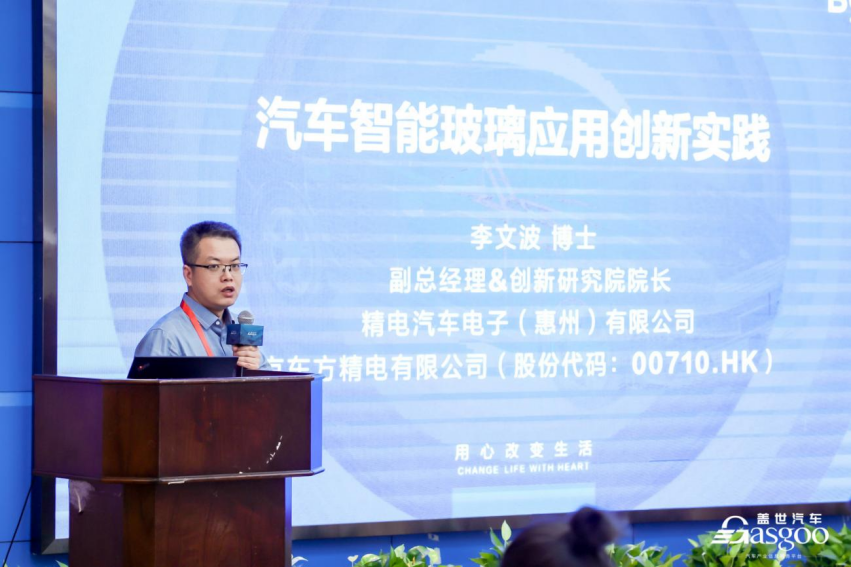
Images

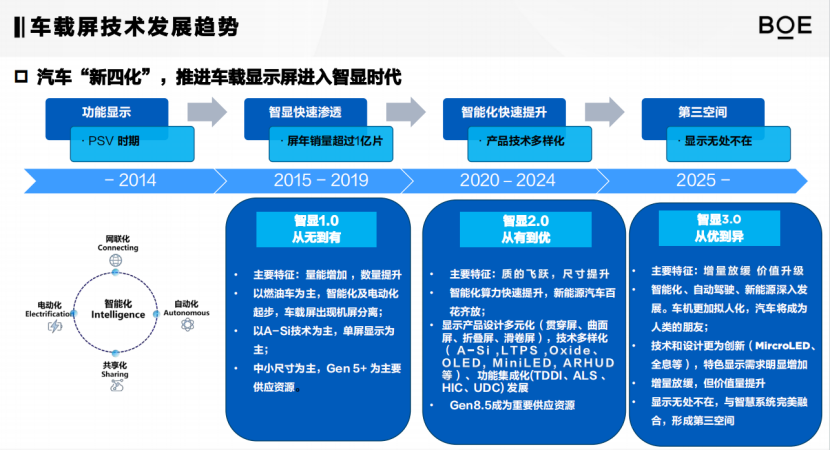
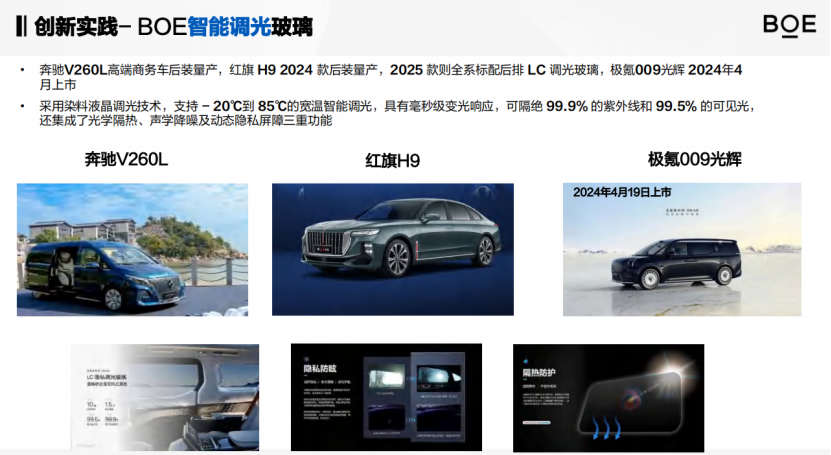
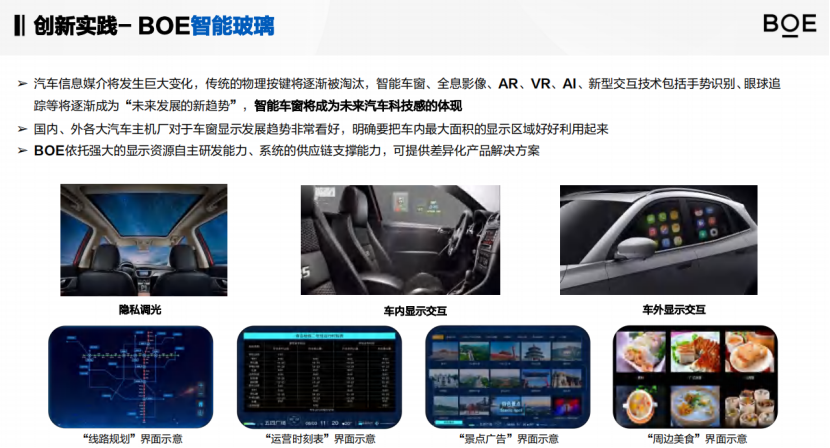
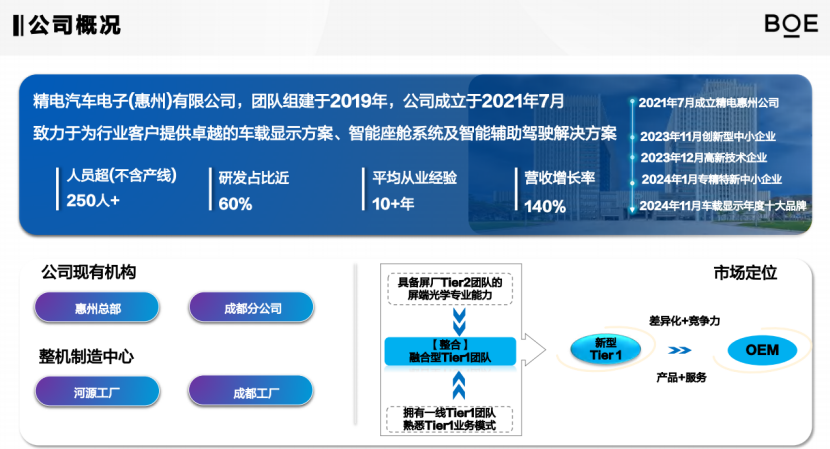
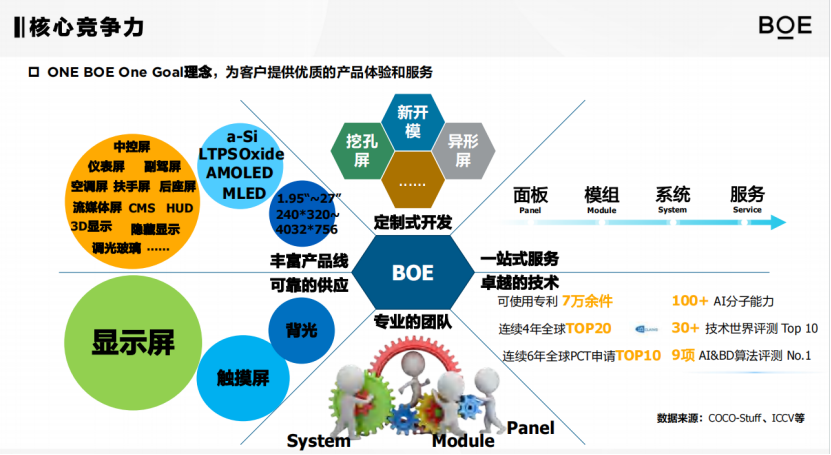

Share this post on: